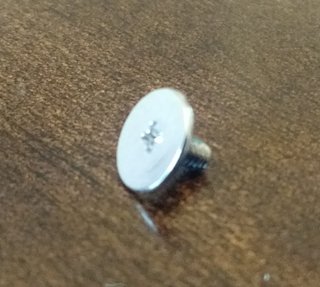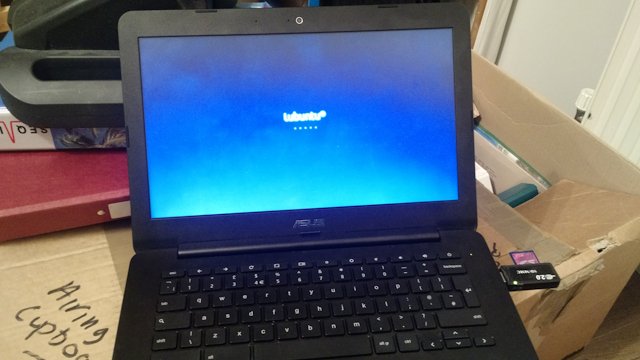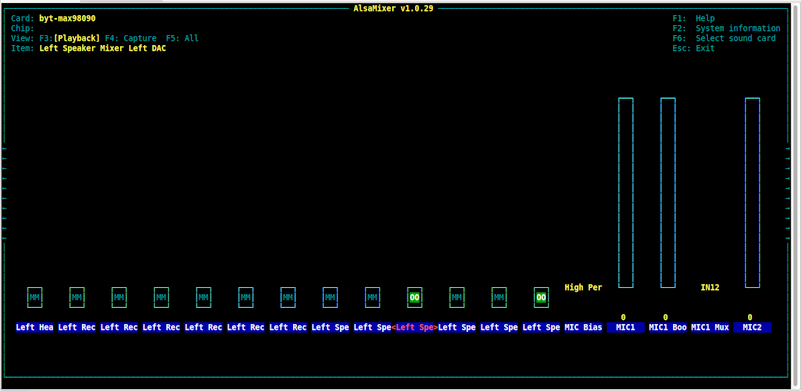Native Linux on Chromebook
If you want to get Linux on a Chromebook, then the awesome crouton should be first on your list. I’ve used it successfully for the about a year, but it has some drawbacks:
- Keybinding issues - these can mostly be fixed with enough effort
- Performance issues - you’re asking the Chromebook to do a bit more with both ChromeOS and Linux running. It wasn’t uncommon for the machine to seize up in Linux.
- Docker - I couldn’t get this to run. IAGTU that some people have managed it, but it seems to be a hairy story.
So, figured it was time to go all out and install a nice lightweight Linux on my Asus C300 Chromebook. This gives us the following dependency graph.
Install Lubuntu -> Legacy Boot -> SeaBIOS -> Enable BIOS write
Enable BIOS write
 Yowsers! This requires you to open the Chromebook to remove a write protect screw :S I followed the guide here. It was fairly straightforward and everything looks like it did before, despite breaking some of the small clips holding the case together.
Yowsers! This requires you to open the Chromebook to remove a write protect screw :S I followed the guide here. It was fairly straightforward and everything looks like it did before, despite breaking some of the small clips holding the case together.
SeaBIOS
Few Chromebooks come with Legacy Boot support, and the C300 is no exception. John Lewis (not the UK retailer!) has build SeaBIOS for Baytrail Chromebooks and provided a very handy installer. Read all the warnings on his site. In particular, at the time of writing, you’re going lose suspend functionality. I don’t think this is a deal-breaker, because the power usage of Baytrail is so low with the screen off, but it’s certainly a shame.
Legacy Boot
For some reason on this hardware, the keyboard is extremely flaky during boot and during the install. Some people mention using an external keyboard to work around this. I managed to trigger the boot menu by hitting ESC immediately after the prompt appeared, not before and not more than once. I also had trouble finding a USB drive which would boot, eventually using an old 1GB drive.
Install Lubuntu
 I haven’t tried LXDE before, but the low specs of the C300 persuaded me to go with something really lightweight instead of GNOME/Unity. Tips - don’t mess around with an i386 install, I figured it might be more performant, but immediately discovered that Google are dropping support for i386 Chrome in April 2006. Which is perfectly reasonable, but caught me out.
I haven’t tried LXDE before, but the low specs of the C300 persuaded me to go with something really lightweight instead of GNOME/Unity. Tips - don’t mess around with an i386 install, I figured it might be more performant, but immediately discovered that Google are dropping support for i386 Chrome in April 2006. Which is perfectly reasonable, but caught me out.
Thoughts
I’ve found LXDE really nice, I’m pretty sure I prefer it to XFCE and it’s even smaller, so that’s a win. John Lewis’ blog mentions that there are issues with sound. I did get it working by first using pavucontrol to disable the HDMI out, then alsamixer to judiciously unmute channels (never seen so many before).  . Specifically these 4; (Left|Right) Speaker Mixer (Left|Right) DAC.
. Specifically these 4; (Left|Right) Speaker Mixer (Left|Right) DAC.